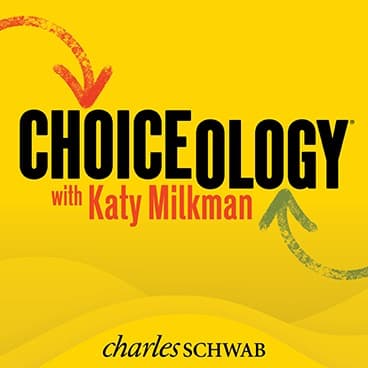In the Face of Risk: With Guests Jeff Elison & Ido Erev
For many, the onset of the coronavirus pandemic was terrifying. Descriptions of the outbreak in Europe and Asia led to panic buying and sheltering in place here at home. But, as time passed and people became acclimatized to life with masks and social distancing, many of those same people who were terrified at the outset began to let their guard down and take unnecessary risks.
In this episode of Choiceology with Katy Milkman, we look at a peculiar inconsistency around how we perceive risk and rare events.
Jeff Elison is a professor and an avid rock climber. Jeff tells the story of a fateful climb on a beautiful sunny day just outside of Alamosa, Colorado. Jeff normally climbs with friends, but on this particular day, none of his regular partners were available. Early in his climbing career, Jeff might have balked at a solo climb, but as a veteran, he felt confident that he could manage the familiar climb safely. But then, he slipped and fell.
Jeff Elison is a professor of psychology at Adams State University. He is also the author of the book Vertical Mind: Psychological Approaches for Optimal Rock Climbing.
Next, Ido Erev joins Katy to explain how we often overweight rare events when we make decisions based on a description and underweight rare events when we make decisions from experience. You'll hear about his research identifying this phenomenon, as well as several personal anecdotes demonstrating how all of us fall prey to these miscalculations from time to time.
Ido Erev is a psychologist, professor, and vice dean of the MBA program at the Technion–Israel Institute of Technology.
Finally, Katy discusses strategies to mitigate the downsides of the description-experience gap in risky choice and ways to leverage the fact that we often underweight rare opportunities as well.
Choiceology is an original podcast from Charles Schwab.
If you enjoy the show, please leave a rating or review on Apple Podcasts.
Learn more about behavioral finance.
Explore more topics
All expressions of opinion are subject to change without notice in reaction to shifting market conditions.
The comments, views, and opinions expressed in the presentation are those of the speakers and do not necessarily represent the views of Charles Schwab.
All corporate names are for illustrative purposes only and are not a recommendation, offer to sell, or a solicitation of an offer to buy any security.
Data contained herein from third-party providers is obtained from what are considered reliable sources. However, its accuracy, completeness or reliability cannot be guaranteed.
Investing involves risk, including loss of principal.
The book How to Change: The Science of Getting from Where You Are to Where You Want to Be is not affiliated with, sponsored by, or endorsed by Charles Schwab & Co., Inc. (CS&Co.). Schwab has not reviewed the book and makes no representations about its content.
Apple Podcasts and the Apple logo are trademarks of Apple Inc., registered in the U.S. and other countries.
Google Podcasts and the Google Podcasts logo are trademarks of Google LLC.
Spotify and the Spotify logo are registered trademarks of Spotify AB.



